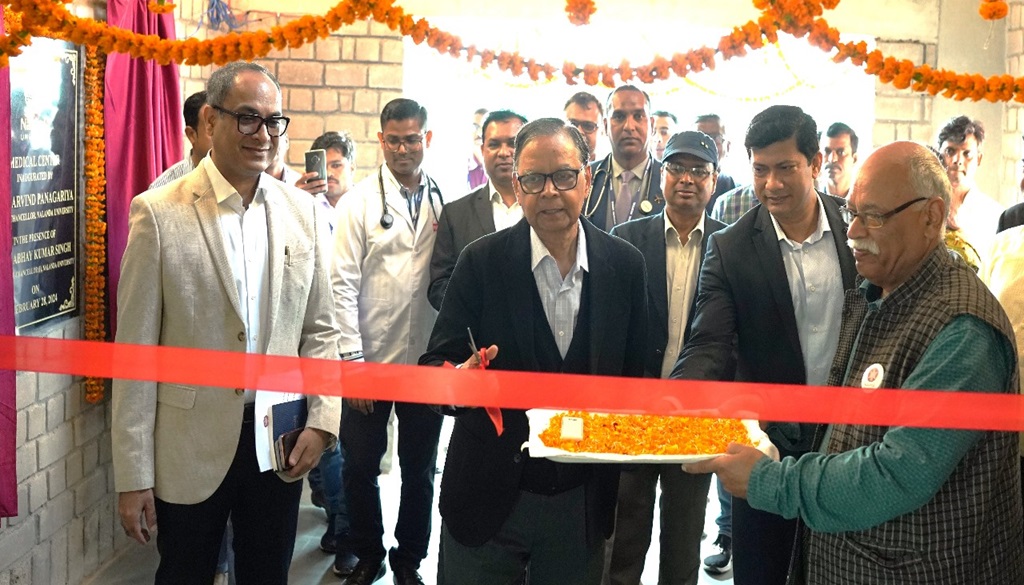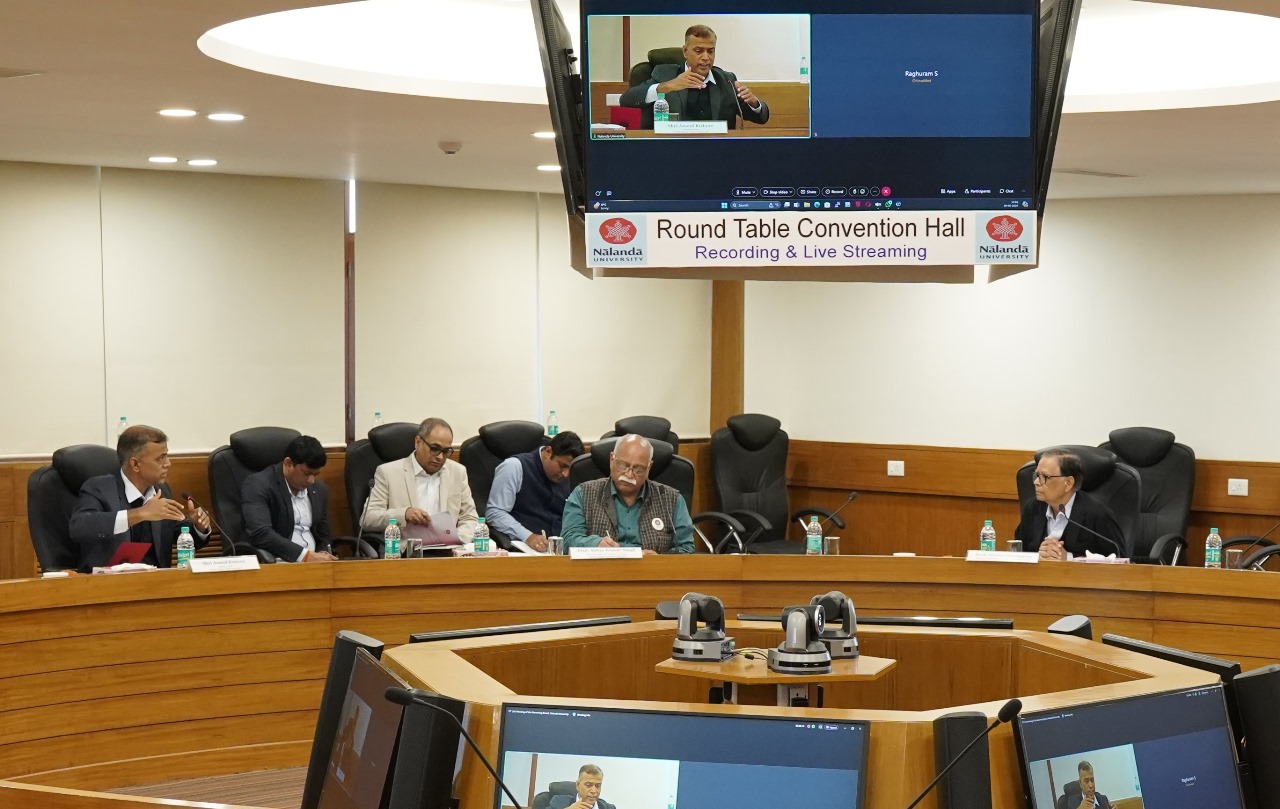Nalanda University Continues Renaissance: Chancellor Inaugurates State-of-the-Art Medical Center

Rajgir: In a momentous occasion, Professor Arvind Panagariya, Chancellor of Nalanda University, inaugurated the newly built Medical Center on the university campus today on Wednesday. This inauguration marks yet another significant step towards the ongoing rebuilding of Nalanda, reflecting its rich history and embracing its future as a hub of academic excellence and cultural diversity.
The occasion was graced by esteemed members of the Governing Body of Nalanda University, and highlighted the university’s commitment to providing top-notch facilities for its international students. Chancellor Prof. Arvind Panagariya highlighted the importance of creating an environment that caters to the diverse needs of the university’s community.
On the occasion, the Vice Chancellor (I) Prof Abhay Kumar Singh stated that “By prioritizing the well-being of Nalanda community, the addition of on-campus medical facilities underscores a conducive environment of learning and living”.
The Medical Center is of around 15000 square feet of built-up area 2 storyed building with 5 OPD and 15 capacity IPD equipped with Medical Beds, with essential amenities such as X-ray facilities, pathology labs, and on-site pharmacy, coupled with specialized consultations and 24/7 ambulance service.

During their visit to the campus, members of the University Governing Body expressed admiration for the remarkable progress and achievements of Nalanda. Discussions during the Governing Board meeting is centred around the university’s vision and strategies for further elevating its academic stature and global impact.
Nalanda University, renowned for revolutionizing early educational, social, and religious landscapes in India and Asia, is undergoing a historic revival after nearly a millennium. With students from over 30 countries are residing in on-campus housing, the university’s new avatar symbolizes a vibrant fusion of its illustrious past and a promising future as a beacon of the Asian renaissance.





